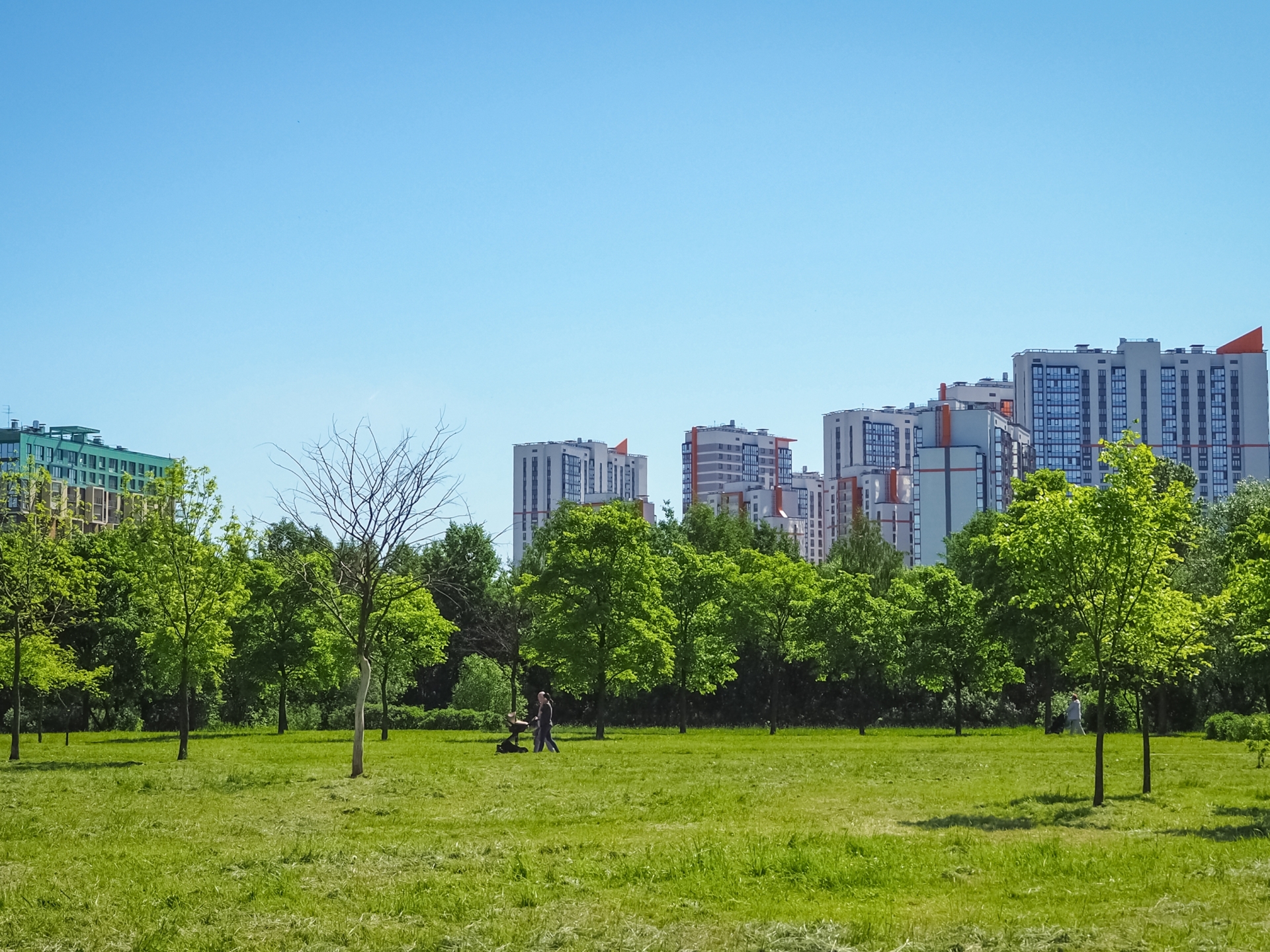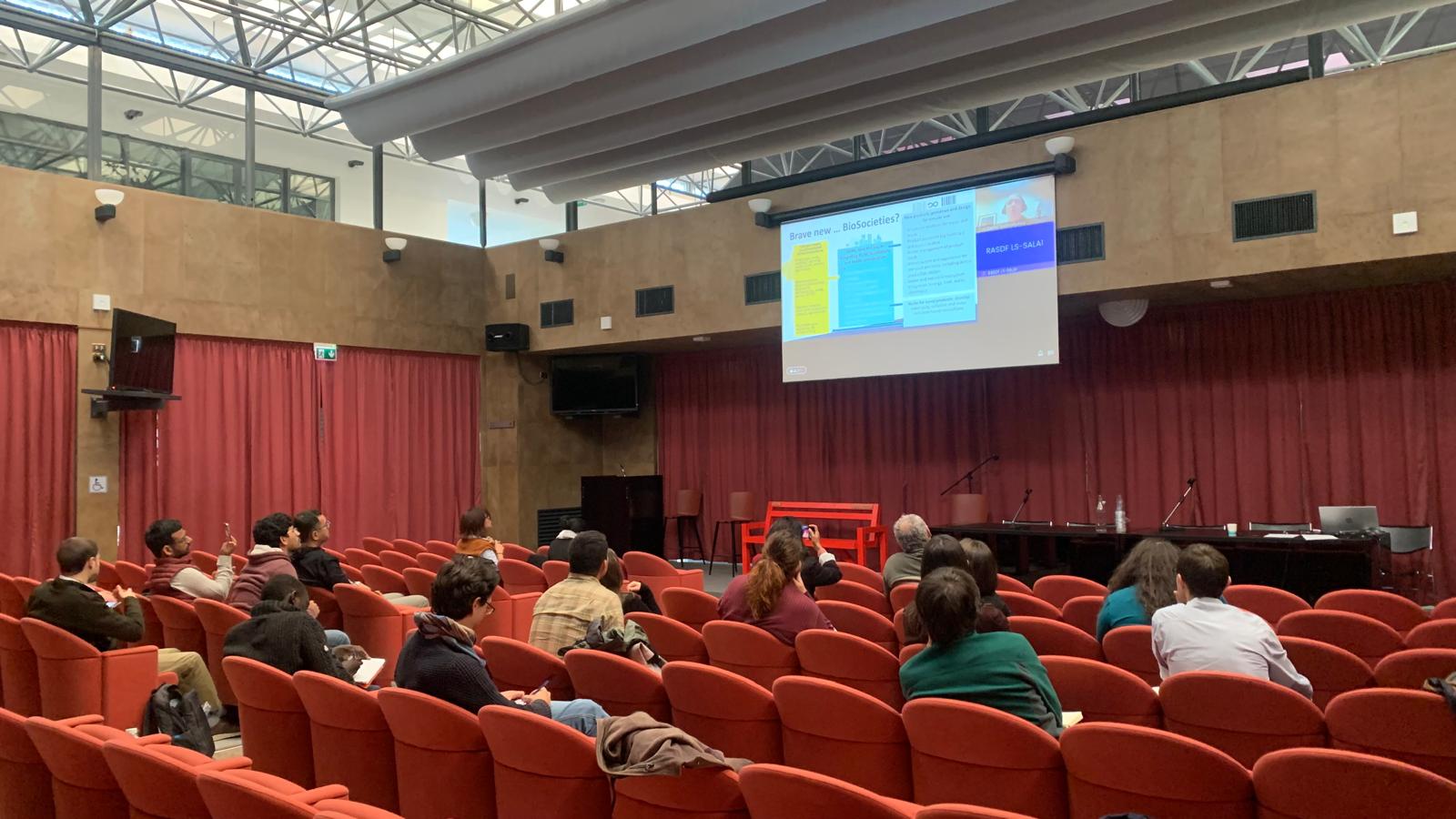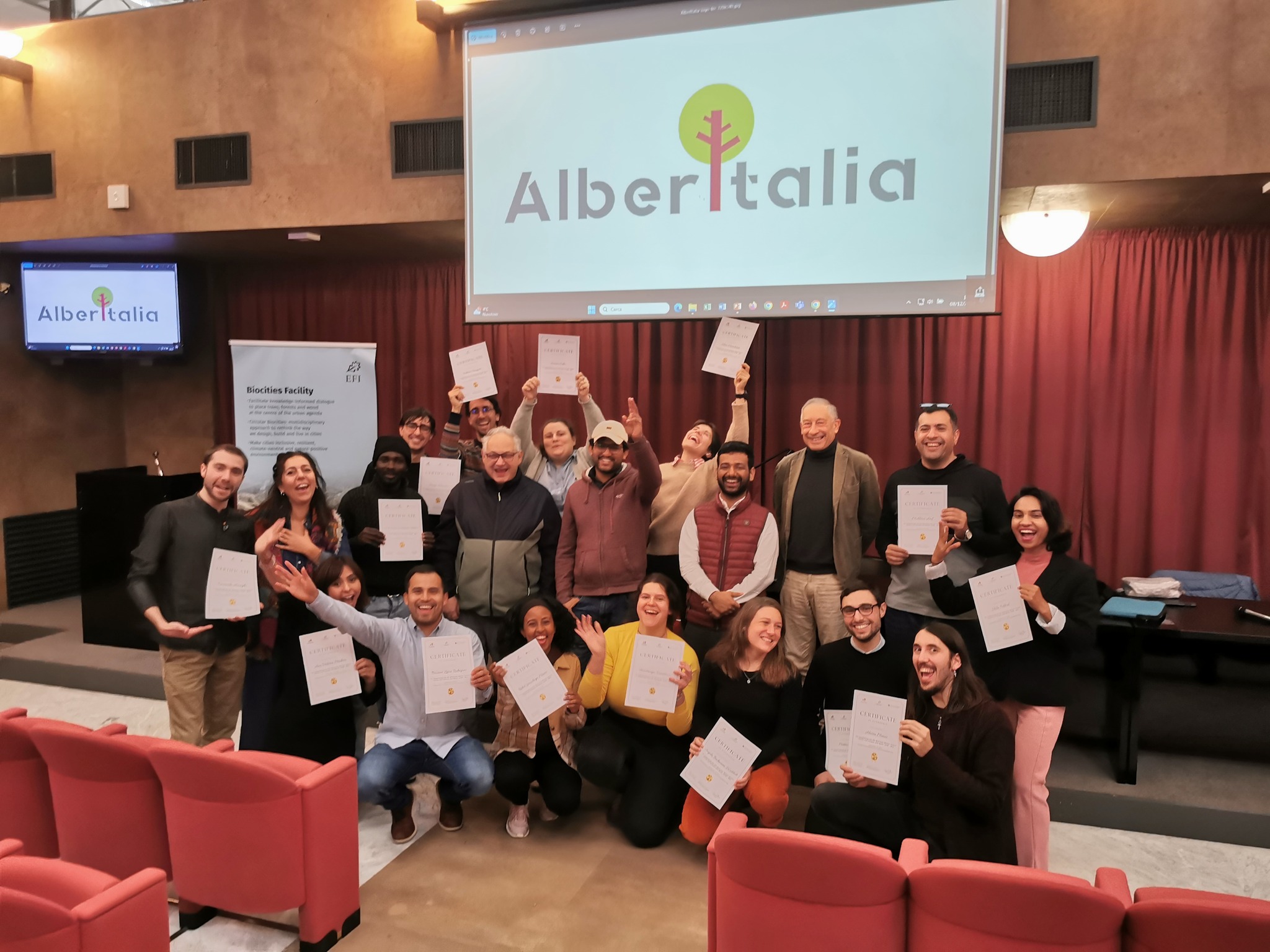
EFI Biocities 2024 Winter School
Cities call Forests and Back (CFB-WS)
The EFI Biocities CFB-Winter School, organized in collaboration with AlberItalia and SISEF, is designed for Early Career Researchers (ECR, PhD, Post-doc) and postgraduate students (PhD students, Master students) in and outside Europe, who are carrying out research and studies on the ecosystem of relationships between forests and cities.
For this second edition, 17 students from 10 countries (Italia, Tunisia, Marocco, Iraq, USA, India, Paesi Bassi, Svezia, Germania, Macedonia del Nord) were selected for the scholarship.
Official language:
English
Duration:
8 days (form 1st Dicember 2024 to 8th Dicember 2024)
Scientific Committee:
Prof. Giuseppe Scarascia Mugnozza, Prof. Fabio Salbitano, Prof. Clive Davies, Prof. Matilda van den Bosch, Prof. Mesele Negash Tesemma, Prof. Marco Marchetti.
Organizing committee:
Dr. Sergio Gallo and Dr. Gabriele Locatelli
Objectives
- Providing knowledge on urgent and emerging issues linking cities to forests and providing the tools to transform cities as we know them today to Biocities;
- Developing discourses, methods, and research insights as collaborative outputs of co-produced Living Labs;
- Strengthening transdisciplinary collaboration, with the goal to translate knowledge to action for a sustainable future of the urban environment.

EFI Biocities CFB-Winter School: Background
Cities are the places where the majority of people in the world live. They are key nodes of business, with decision-making power and a natural capital footprint that goes far beyond the physical urban sphere. Cities’ societies, via diversified policy arrangements, exert their hegemony in wider surrounding and remote regions, and are the engine of global colonization and migration processes. The awareness of this influence is decisively increasing, leading to proposals to change or update the concept of Anthropocene, where human impact on Earth's geology and ecosystems is dominant. Effectively, the newly introduced concept of Urbanocene emphasizes the determinant role of global urbanization’s footprint on the interactive dynamics of the biosphere, hydrosphere, atmosphere, and lithosphere.
Characterized by high population density, cities are surrounded by rural areas, which are less densely populated with a minority of built-up space. Rural areas are perceived as a mosaic of land uses having various degrees of naturalness. Notwithstanding certain benefits that rural areas gain from cities, such as market access, investment inputs, or employment opportunities, cities have generally developed a resource-demanding relationship with those areas. The countryside is historically perceived as a source of food, water, materials, energy, leisure, relaxation and tourism opportunities to serve the needs of cities, which behave as accumulative economic nodes. Urban dwellers, particularly in middle to high-income countries, are physically and mentally disconnected from the rural world. The process of urbanization of mindsets and lifestyles rapidly increased in the last three decades. Almost 76% of Europeans live in urban areas in 2023 but the urban behavior in terms of use of resources, shopping and transport preferences, leisure and culture priorities, time organization, socialization approaches and housing standards concerns 98% of people living in Europe: urbanization goes far beyond the city’s boundaries.
The BioRegion concept refers to a refined urban regional scale that includes the BioCity and its surroundings and is formulated and defined by natural and social interconnections (e.g. watersheds, foodsheds, and food systems) rather than administrative and economic boundaries. This means that the term BioRegion is more consistent with a ‘network’ rather than with a spatially compact region. In the circular BioSociety, formulated by the BioCity and its BioRegion together, the use of resources and the economy around it is more cyclical. The impact on nature and the dependence on energy sources, such as fossil fuels, is minimized, and climate change and adaptation to global and regional environmental change are integral to its functions.
The social-ecological system of a BioCity and its BioRegion comprises a variety of organisms, compartments, and processes, with distinct traits and interdependent flows of ecosystem functions and services across a blue and green network within the landscape.

